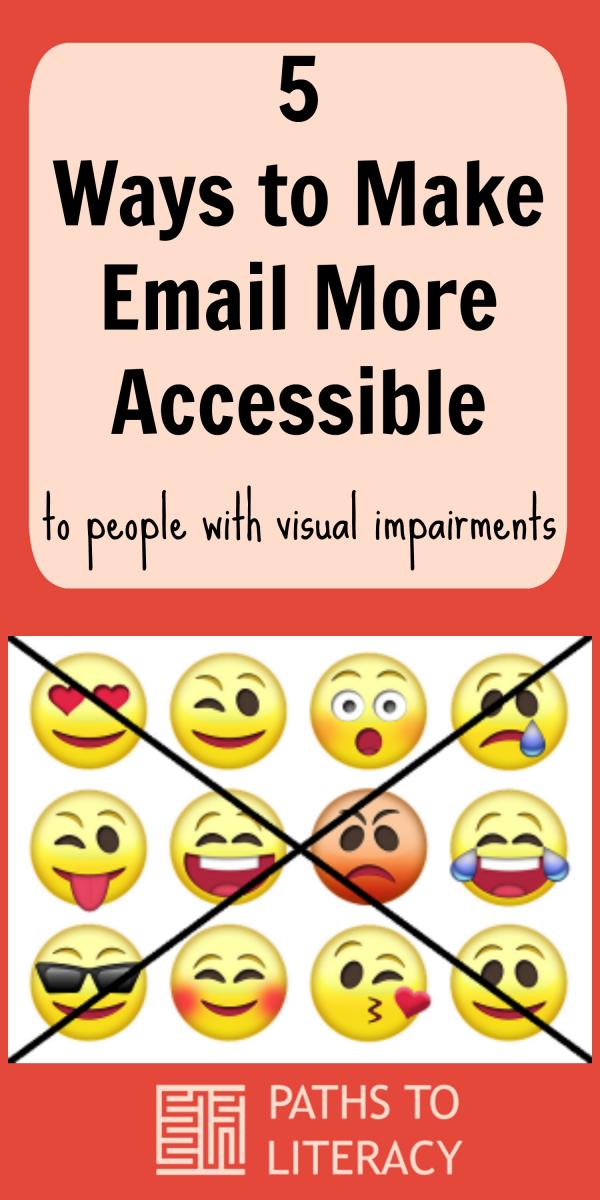5 Ways to Make Email More Accessible
We might not ordinarily give a lot of thought to the accessibility of our emails. However, it's easy to forget that the recipient could be reading your email using a screen reader. Screen reading technology has come a long way, but it’s not perfect. So it's important to follow a few simple guidelines when writing for this audience.
Here are 5 easy ways to make the emails you send more accessible:
1. Don't use emoticons or popular Internet abbreviations.
Emoticons -- smiley faces or other iconic uses of symbols on the keyboard -- can cause confusion to your recipient. Why? Because while you might know that :-) is a smiley face, for example, the majority of screen reader software will read that out loud as "colon dash right parenthesis." Similarly, the use of popular abbreviations like LOL or OMG sound confusing when read aloud, though they make more sense when read by sight.
2. Avoid all caps.
Some screen readers will spell out (rather than pronounce) words that are written in all upper-case letters. Plus, anything you write online in all caps is generally interpreted as shouting, which might be considered rude.
3. Avoid unnecessary use of images.
Graphics and stationery that make emails look visually appealing will obstruct your message when your recipient is using a screen reader. It’s best to stick to plain text.
4. Write a meaningful subject line.
Rather than using a vague subject line like “An announcement” or “Big news!” try to include meaningful information in your subject line, even if it’s just repeating some of what’s in the content of your message. For example, “Agenda attached for meeting on Friday, April 25th” would be a better subject line than “About the meeting.”
5. Get to the point.
Write as clearly and concisely as possible. If you do this, your email will be easier to understand, whether or not your recipient is using a screen reader.
These are some common ways to make emails more accessible, but we're sure there are more. If you have another email accessibility tip, please let us know in the comments below!
For more information, check out “Accessible E-mail: Messages That Everyone Can Read,” by Jamie Smith on behalf of the Blind Services Division of the Florida Department of Education.

This article was originally posted on the BrailleSC website, which was funded by a grant from the US Department of Education with support from the University of South Carolina Upstate and The Maryland Institute for Technology in the Humanities.
